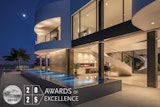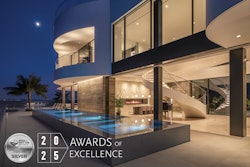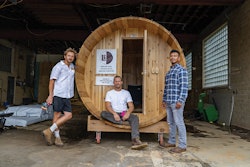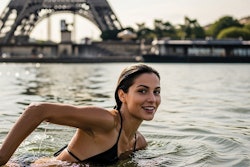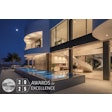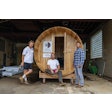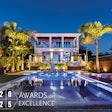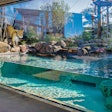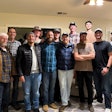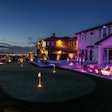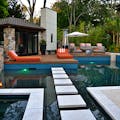
Perched atop a verdant hill, this vinyl-liner pool by Concord Pools overlooks the Schoharie Valley in upstate New York. At first glance, the poolscape might seem ripe for a vanishing edge, but Michael Giovanone, president of the Latham, N.Y., builder said the site was not right. “They wouldn’t get the effect of a negative edge because the house is looking down on the pool.”
Giovanone says the free-form shape works best in this application because “it’s enhancing the natural beauty of the valley and mountains behind, which have no straight line definition, either.”
“pavers are very forgiving and the percolation in the deck is wonderful. In this valley, as in most valleys, they tend to have a lot of rain, and the water soaks through the cracksbetween the pavers rather than puddling or causing runoff.”
Another useful feature is the pool’s in-floor radiant heating system. “It is one of our largest-selling features,” says Giovanone. “We heat the concrete floor of the pool, not the water itself.” With this heating system, a pool’s pump and filter do not have to be running to heat the water. “It’s the most efficient, comfortable way to heat a pool.”
“The first year we did this heating system, over five years ago, we did two or three, and then it was a dozen, and then it was three or four dozen. And this year we’re looking to do probably 150 radiant-heat systems.
“They’re very popular, especially in negative-edge pools and placid water features, because if you’re running your filter and you have returns pumping 40 to 50 gallons of water back into your pool, you tend to get a little bit of turbulence on the surface, so you have to shut it off for it to look good. Well, if it’s shut off, it’s not heating, which means you’re having temperature drops and people don’t like that. With this system, you do not have to run your filter, but you’re still heating your pool. It’s a wonderful marriage of a proven system just being used in a new application — the swimming pool.”




















